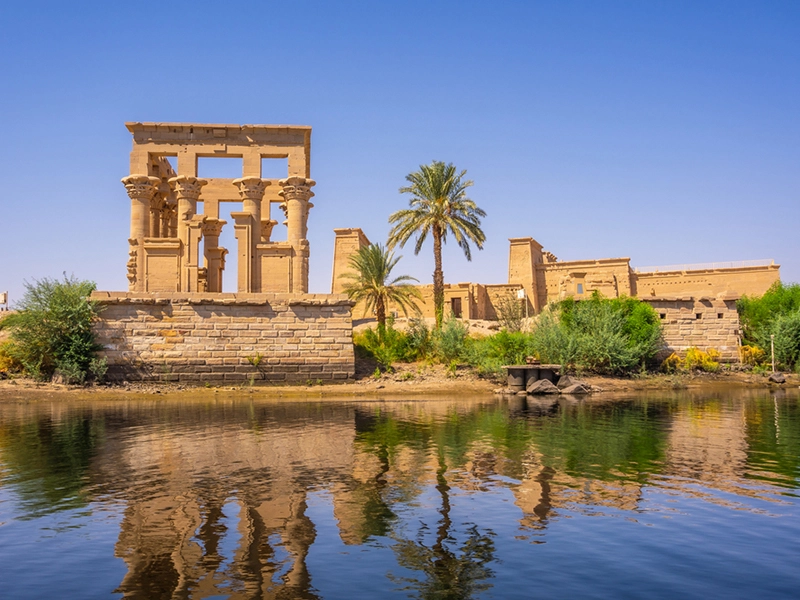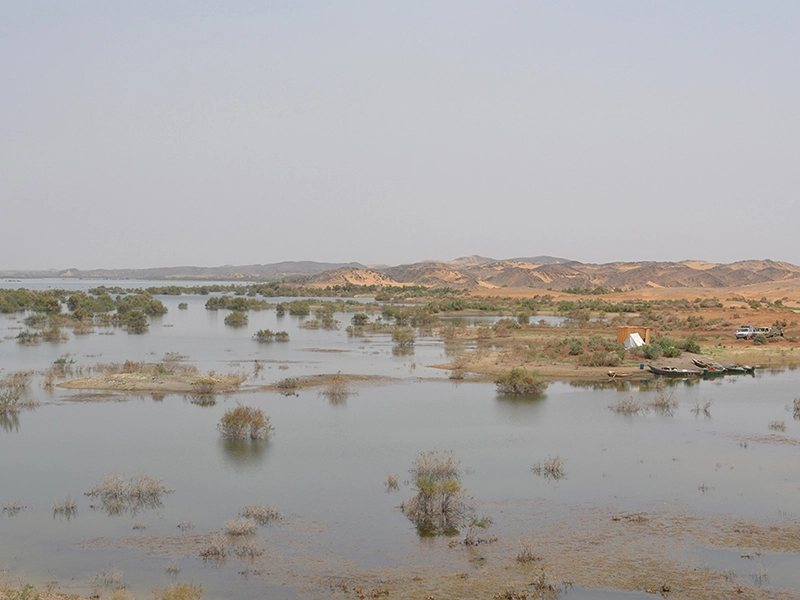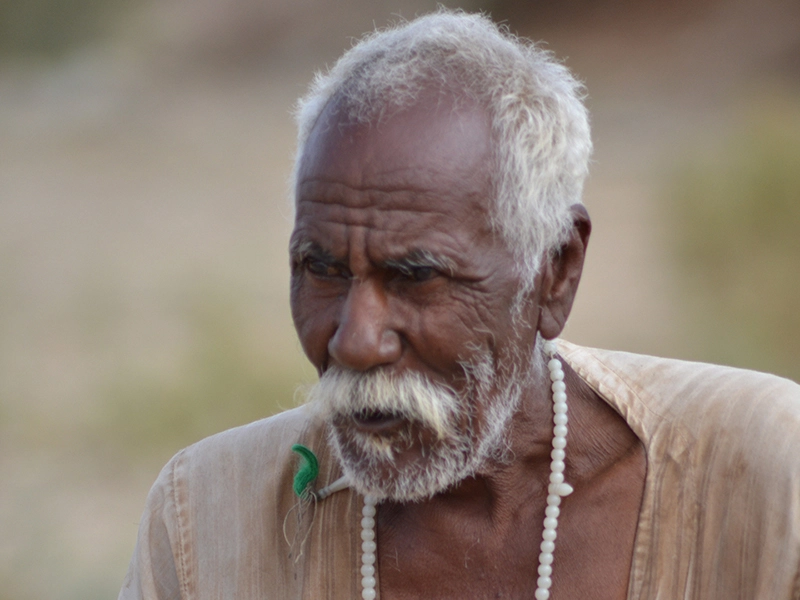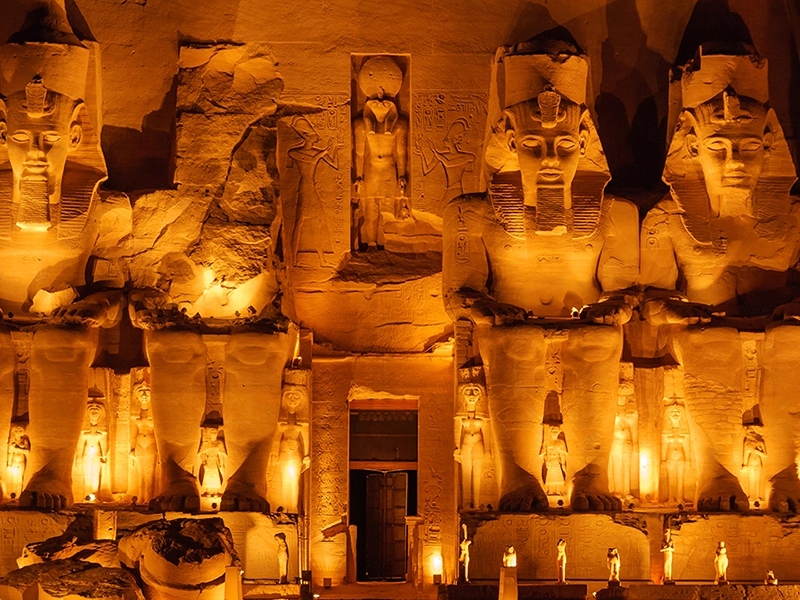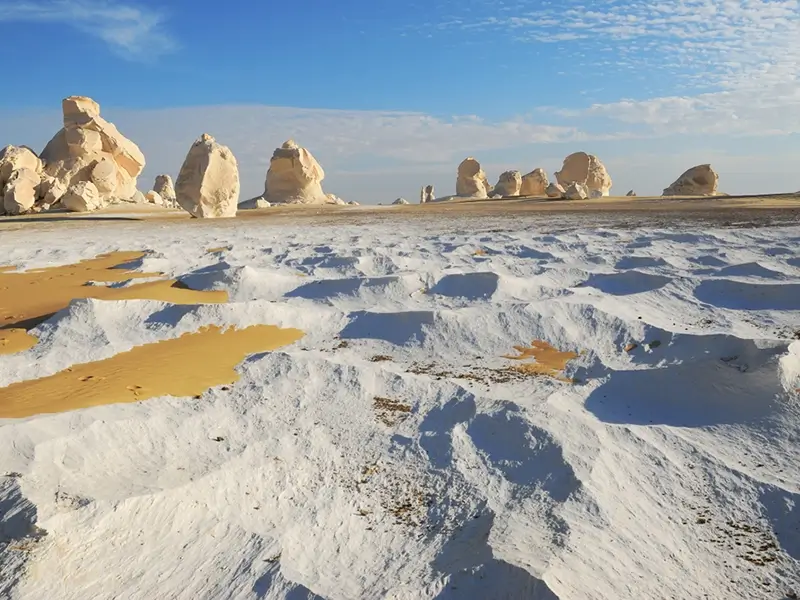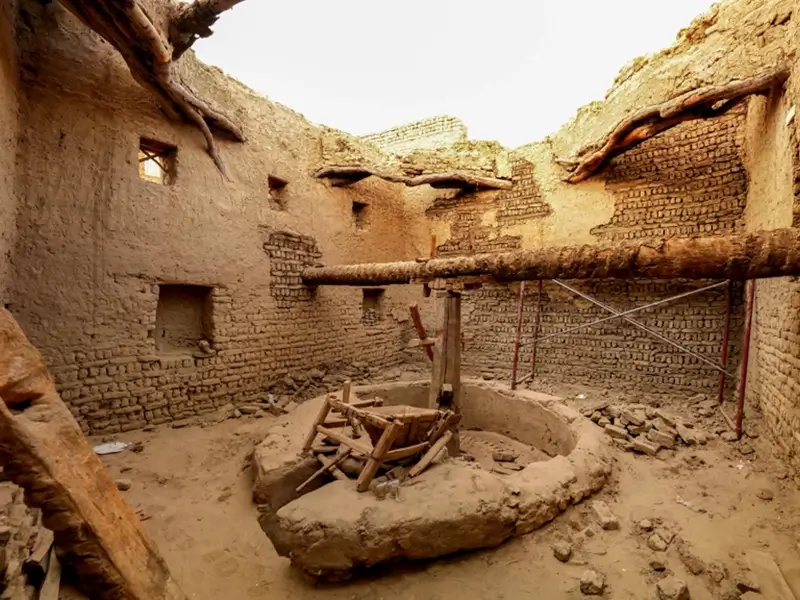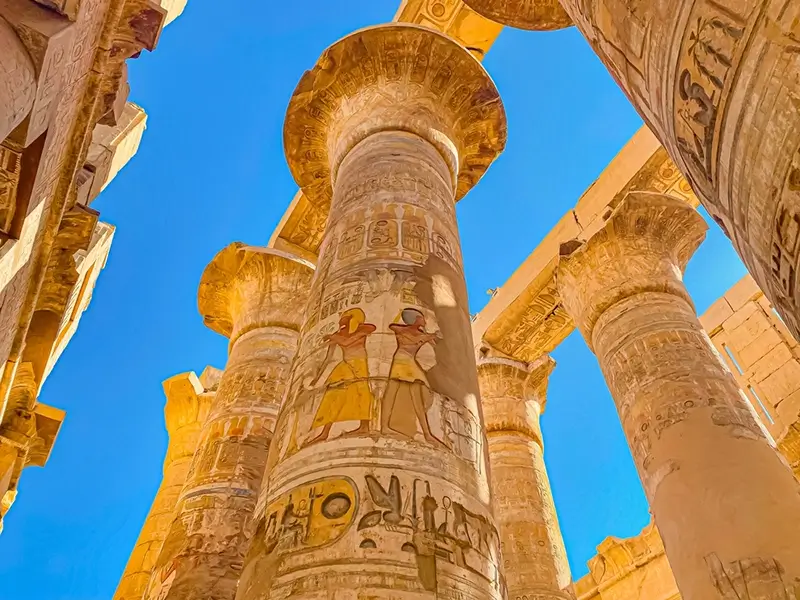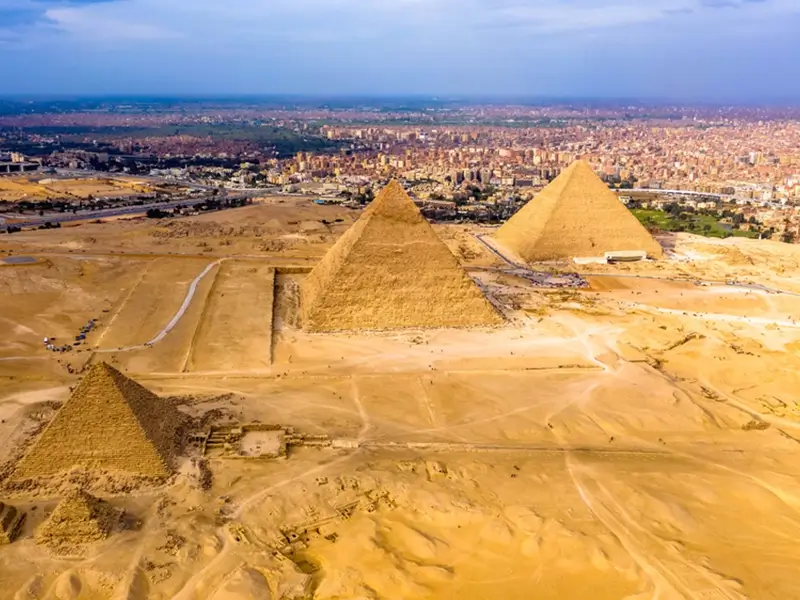- Overview
- Trip Outline
- Trip Includes
- Trip Excludes
- Gallery
- Booking
- FAQ
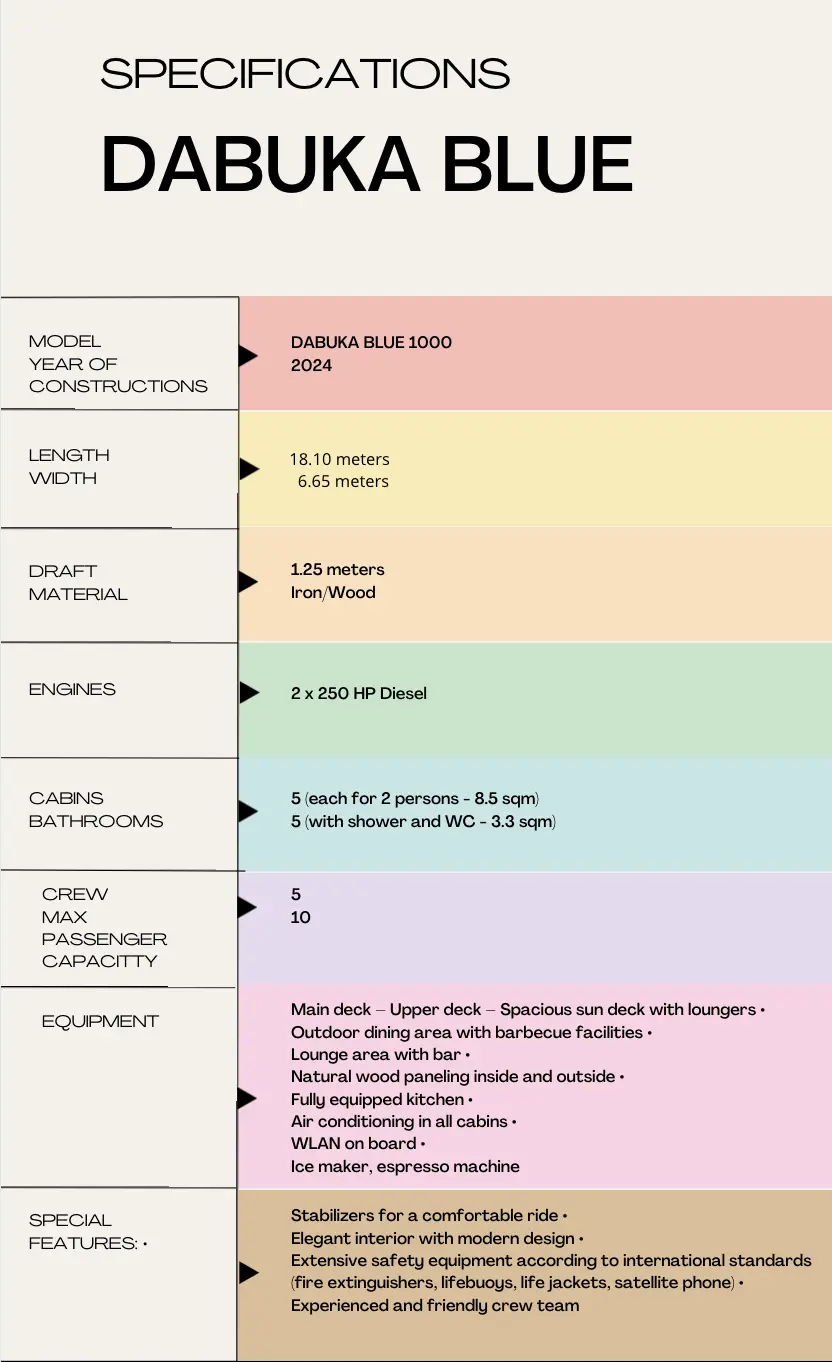
Philae Temple, Pyramids and Museum of Civilazation
"Dabuka Blue" offers you a unique opportunity to experience Egypt in a very special way. To begin with the vibrant metropolis of Cairo. Here you can visit the impressive Pyramids of Giza and the Museum of Civilization. Philae Temple and more - you will dive into Egypt's rich history as you explore ancient artifacts and relics.
World famous White Desert Egypt
At first, we head from Cairo to the White Desert. You will find a fascinating natural spectacle with surreal limestone formations. Here, you can camp under the clear starry sky and enjoy the silence of the desert.
Temples along the Nile - Edfu, Philae Temple and more
Furthermore, we continue our journey through ancient cities and temples along the Nile. Along the way, we visit the Temple of Edfu, the Double Temple of Kom Ombo, and the imposing temple complex of Luxor on the Nile's West Bank.
The journey takes us further to Aswan, where we board our luxury safari boat. From here, we explore the ancient temples along Lake Nasser, including the Temple of Abu Simbel, the Temple of Amada, and the Temple of Kalabsha.
Comfortable Luxury Safari Boat Trip
Generally, our handcrafted luxury safari boat is your personal oasis on the water, offering all the amenities of a floating home. You may relax and enjoy the fascinating views as we guide you to the highlights along the route like Philae Temple for example.
On our luxurious safari boat tour along Lake Nasser, you'll experience the beauty of Egypt from a unique perspective. With this in mind, you enjoy the luxury, tranquility, and majestic landscape as we pamper you and ensure you miss nothing.
Breathtaking landscapes and Egypt's History
The journey offers not only breathtaking landscapes but also the opportunity to experience Egypt's rich history and culture up close. Without doubt you heard already about Philae Temple? With "Dabuka Blue," you experience Egypt in a very special way - let us take you on an unforgettable journey.
Day 1: Cairo Airport - Hotel
At first, your guide will wait for you at the airport to take you to a cozy spot in the suburbs of Cairo. Overnight at the Pearl Hotel or similar (B).
Day 2: Cairo – Bahariya
We will pick you up from your hotel. After a drive of about 3 hours to the Bahariya Oasis, we start with a lunch. The oasis is located in a depression that is 100 km by 40 km . It is completely surrounded by high black cliffs. Because Bahariya is a natural treasure of Egypt, it is definitely worth a visit.
Here you find lush date palm groves, olives, ancient springs, and wells. Perhaps we will have time to explore the oasis a bit more. There is also the opportunity to enjoy the unique experience of bathing in a hot spring. So – even if Philae temple seems to be more famous, Egypt’s nature is fabulous too. Overnight at the Bahariya Hotel (B).
Day 3: Bahariya – Farafra
Straightaway we continue south with a stop in the Black Desert before we reach the White Desert. Millions of years ago, the desert was a seabed. As the sea receded, layers of sedimentary rock were exposed, and a plateau collapsed. Some rock formations have withstood the changes of time. They give the White Desert its unique features and charm.
Beyond all geological explanations, it is always exciting to let your imagination run wild. You may discover rabbits, ducks, and human heads in the limestone formations. We continue our drive through the desert to the Farafra Oasis. Before we reach the oasis, we make another stop at Crystal Mountain. Overnight at a hotel in Farafra (B).
Day 4: Farafra - Deir al Haggar - Qasr, Dakhla
After breakfast, we continue our drive along the oases . Eventually reach the Dakhla Oasis, also a special place. Deir el-Hagar, the 'Stone Monastery,' is a sandstone temple on the western edge of the Dakhla Oasis. You find it about 10 km from el-Qasr in the desert south of the cultivation.
In ancient times, people called it the "Place of Coming Home" or "Set-whe." Debris and sand buried the temple for centuries. Than it was uncovered, restored, and partially rebuilt in the 1990s . The Dakhla Oasis Project with the Supreme Council of Antiquities initiated it. Finally it is now open to visitors.
El-Qasr is a small village in the Dakhla Oasis. Unquestionably, a visit to the village is worthwhile, as no one did major changes there since ancient times. In various corners of the village, archaeologists found a pottery, an ancient grain mill, and various Roman, Mamluk, and Ottoman remains.
Furthermore, the mosque and madrasa of El-Qasr as well as the Madrasa (Quran school) date back to the Ayyubid period (circa 1000 AD). The Dakhla Oasis is the southernmost oasis of Egypt. It was historically at the center of an important caravan trade route. Not only it connected Dakhla with the Kharga and Farafra oases but also with the Nile Valley in the west and with Libya in the east.
Unlike the other oases in Egypt, more than half of the land in Dakhla is cultivated. This is because the Dakhla Oasis is rich in a large number of springs like "Bir Talata" (Well Number Three) and "Bir El Gabal" (Well of the Mountain). These freshwater springs are some of the most popular tourist attractions in the Dakhla Oasis. People can enjoy their wonderful warm water and relaxed atmosphere. Let's walk through the oasis and explore its special charm. Overnight at the hotel (B).
Day 5: El Bagawat - Hibis Temple - Luxor
After that, we set off to follow the Oasis Road, passing by the Kharga Oasis. Near Kharga, we stop at El Bagawat and the Hibis Temple – beside Philae Temple also vey interesting.. El Bagawat is an ancient Christian cemetery. As one of the oldest in the world, it serves the Kharga Oasis in south-central Egypt from the 3rd to the 7th century AD. It is one of the earliest and best-preserved Christian cemeteries from antiquity.
The Hibis Temple is the largest and best-preserved ancient Egyptian temple in the Kharga Oasis. It is as well the only structure in Egypt from the Saite-Persian period (664–404 BC) that is relatively well-preserved. Located about 2 km north of Kharga it shows the syncretic union of two local forms of the deity Amun: "Amun of Hibis" and "Amun-Re of Karnak, residing in Hibis." Alternatively, people believe that the temple was dedicated to Amun and Osiris, with its sanctuary containing depictions of hundreds of Egyptian deities. Finally, we must leave the desert to reach another charismatic place – the city of Luxor - not yet Philae Temple, but we are close. Overnight at a 4-star hotel in Luxor. (B)
Day 6: Luxor (West Bank)
So get ready for a dive into history. In the morning, we will pick you up from your hotel in central Luxor in an air-conditioned vehicle for a fully guided tour around the West Bank.
At first, we take you to the Necropolis of Thebes, the Valley of the Kings on the West Bank of Luxor. This ancient necropolis is a must-see for Luxor travelers. There, you will visit four royal tombs. The visit includes the tomb of Ramses IV, the tomb of Ramses III, and the tomb of the Valley of Merenptah. Then it's on to the magnificent temple of Queen Hatshepsut, maybe you know it as Deir el Bahari. History tells that Queen Hatshepsut, meaning "Foremost of Noble Ladies," has initiated the first trade routes. We continue to the Colossi of Memnon. The Colossi of Memnon are giant twin statues made from blocks of quartzite sandstone.
In the meantime, it is time for lunch. Afterwards we visit to Medinet Habu – another temple beside Philae Temple. The temple was built to honor King Ramses III after his death, at the king's own direction.
Finally, we visit the remains of the ancient workers' village at Deir el-Medina. It was home to artists, craftsmen and workers. They built and decorated the royal tombs in the Valley of the Kings. Then, we move on to the splendid Valley of the Queens, where lies the tomb of the Great Queen Nefertari.
We end the day tour with the Tombs of the Nobles (Optional). There are more than 400 tombs. Royal tombs were adorned with cryptic passages from the Book of the Dead to guide them through the afterlife.
Optional: Early morning hot air balloon ride! Overnight at Luxor hotel. (B)
Day 7: Luxor (East Bank) – Edfu - Kom Ombo – Aswan
On the way to Aswan, you will have the opportunity to visit the major attractions on the East Bank. As you travel, learn that Luxor stands on the 4,000-year-old site of Thebes, the ancient royal capital of Egypt. Karnak is its largest temple complex. Accordingly you may discover how this vast collection of buildings was developed by more than 30 pharaohs, including Amenhotep IV and Ramses II.
Upon arrival, stroll along the Avenue of Sphinxes to the gate, and then explore the interior with your Egyptologist guide. Learn how the massive pylons at the entrance were built. Marvel at the courtyards and sanctuaries behind them. The deeper you venture into the complex, the further back in time you go. The oldest ruins date back more than 3,000 years. Look up in awe at the impressive Hypostyle Hall, towering over you with 134 massive columns like an ancient forest. If you tilt your head upwards you learn more about the sophisticated methods which the ancient Egyptians used to erect them.
You will see the sacred lake with the history of pharaonic offerings . Then enjoy free time to explore the compound at your leisure.
Presently we continue to the Luxor Temple – another important temple beside Philae Temple. It is an ancient temple in the center of Luxor, parallel to the Nile. Different emperors built and expanded it around 1400 BC , like Tutankhamun, Ramses II, and even Alexander the Great.
Of course you will admire the two colossal statues of Ramses at the entrance and the granite gateway obelisk. His counterpart now stands at Place de la Concorde in Paris. Then, enter to marvel at the richly decorated inner sanctuaries, papyrus columns, and courtyards. After that you peek into the atmospheric side rooms, including the chapel dedicated to Alexander the Great, who rebuilt the room in his name.
Then, your journey continues to Aswan, where you will also visit Philae Temple and the temples of Edfu and Kom Ombo. Overnight at the hotel on Heissa Island (B)
Day 8: Heissa Island – Abu Simbel – Kasr Ibrim (Luxury Safari Boat)
After breakfast, we head without delay back to Aswan. Our expert will pick you up to drive south of Aswan, which takes about 3 hours, to enjoy the famous Abu Simbel Temple.
Before you visit the Philae Temple, you have to go south. At hit the temples of Abu Simbel, with their unique style, are considered masterpieces of ancient Egypt. They reflect the splendor and greatness of the New Kingdom. The Egyptian government and UNESCO decided to collaborate in the rescue of these temples from the flood. The temple of Ramses II was dedicated to the four universal gods Ptah, Re-Her-Akhtey, Amun-Re, and Ramses II himself.
The Great Temple of Abu Simbel is also known as the Sun Temple of Ramses II. You may know the temple of Queen Nefertari also as the Temple of Hathor, who was the wife of the sun god. Thus, the two temples, that of Ramses II and that of Nefertari, symbolically bring together Ramses II, Nefertari, Hathor, and the sun god.
At this point, if you think you've already seen so many beautiful things, you're right – but now comes the icing on the cake! At noon, you'll board our luxury safari boat "Dabuka Blue". Familiarize yourself with your floating home for the next few days.
We sail on Lake Nasser for about four hours to Kasr Ibrim, another name is Ibrim Palace. Converted into a fortress during the Ottoman period, it is the only monument that remains at its original location. Although the palace fell victim to several lootings and damages by mobs, it still houses a variety of remnants from the Christian and Islamic periods. Here, we will anchor, as we plan to spend the night in one of the surrounding bays. Dinner on board. (B/L/D)
Day 9: Amada - Pennout - Wadi el Arab (Luxury Safari Boat)
To begin with breakfast on board, we strengthen our body. Afterwards, we head to the temples of Amada, Pennout, and El Derr early in the morning. These impressive temples are maybe not that famous than Philae Temple, but worth a visit. They were relocated by UNESCO and other global organizations to save them from the rising waters of Lake Nasser. The Temple of Amada, built by Kings Thutmose III and Amenophis II, is considered one of the most interesting temples in Nubia.
The Temple of El Derr dates back to the time of Ramses II and was dedicated to the god Amun. Workers cut out the tomb of Pennout block by block from the Nubian village of Aniba. Later they moved it to its current location. During our exploration, additionally we have the opportunity to observe various nomadic bird species. They visit Lake Nasser annually. In the afternoon, we continue our cruise through the scenic landscape of Korousko and Wadi El Arab, one of Nubia's largest valleys. At the end of the day we anchor anchor for the night. Dinner and overnight on board. (B/L/D)
Day 10: Dakka - Wadi El Seboua - Meharraqa (Luxury Safari Boat)
Breakfast on board. Today, we travel down Lake Nasser with the goal to discover three relocated temples. People know them for their unique sculptures and delicate beauty. Dakka (Greek: Pselchis): The Nubian King Ergamenes II along with Ptolemy II, as they co-ruled over Lower Nubia in the third century, built the temples at the same location. Later, the temple was renovated by Roman Emperors Augustus and Tiberius.
Pharaoh Ramses II built the temple in Wadi El Sebous in honor of the gods Amun-Re and Ra. On the way to Aswan we pass through the Abu Steta Desert. People know it for its golden sand dunes and interesting birds in the small lagoons . You find pelicans, cormorants, flamingos, and various small birds (at certain times of the year).
We will anchor to visit the sites of Wadi El Seboua, Dakka, and Meharraqa. After that we pass through the region of Khour El Alaki, the widest area on Lake Nasser. Its span reaches up to 60 km. Finally we cross the area of Bab Kalabsha. Lake Nasser in this part is turbulent and wavy (at certain times of the year). The boat will spend the night in one of the bays. Overnight on board. (B/L/D)
Day 11: Kalabsha - Beit El Wali - Aswan (Luxury Safari Boat)
Breakfast is served on board as we make our way early to the city of Aswan. This special route offers a beautiful view of the lake shores.
Kalabsha, formerly called Mandoulis, dates back to Roman times. It was originally located in the city of Kalabsha, until people rescued and moved it to its current location. Beit el Wali means the house of the Holy; workers carved it into the mountain during the reign of the great Pharaoh Ramses II. We will visit the original sites of Beit El Wali and Kalabsha and enjoy one last swim in Lake Nasser before we conclude our journey in Aswan. These two temples are ten minutes away from our docking place. Check-out. We say "Goodbye" to "Dabuka Blue". (B)
NOTE! The program serves as a guideline and depends on local conditions as well as force majeure in terms of weather. The order of visits may be changed, but the entire program will be maintained. The weather in this region in February, March, and April sometimes forces us to anchor due to sandstorms and storm strengths that can reach speeds of up to 80 km/h.
Now that you are in Aswan, you get to know its main attractions. A professional licensed tour guide will accompany you with background information in all languages. It's more than sightseeing - you will truly experience a special part of Egyptian culture. High Dam – Philae Temple - Unfinished Obelisk - Nubian Village. Overnight at a hotel in Aswan.
Day 12: Aswan – Cairo (Flight)
We take our flight back to Cairo. Check-in at the Pearl Hotel or similar. The rest of the day is at your leisure. Overnight at the hotel. (B)
Day 13: Cairo
Another key point for today, you will visit the Pyramids of Giza - they are always worth a visit. Then we continue our sightseeing at the Museum of Civilization. The museum impresses with a modern, spacious complex. His current highlight is undoubtedly the royal mummies, which can be visited in the basement. On the ground floor, you can then follow Egyptian history in various ways - our guide will explain everything to you.
On the positive side, a little glamour should not be missing; the Thousand and One Nights feeling in the world-famous Khan Al Khalili bazaar is worth a walk.
Optional: Grand Egyptian Museum, Geographical Society, Coptic Cairo, Pyramids of Dahshur. We are happy to give you tips for good restaurants and nice cafes. Overnight at the hotel. (B)
Day 14: Cairo - Departure
After breakfast, the airport transfer follows and "Goodbye, Egypt! We'll see you again!"
Optional excursions and programs: During your journey along the route, you have the opportunity to experience various optional excursions and programs to enrich your Egypt experience:
- Bahariya Oasis: Discover the beauty of the Bahariya Oasis and its surrounding desert landscape. Explore the unique culture and lifestyle of the oasis inhabitants and visit the interesting sights in the area.
- Secret Desert Pools: Spend a day with a local guide to discover secluded desert pools where you can refresh and enjoy the pristine nature.
- Dinner Under the Stars: Enjoy a romantic dinner under the clear desert sky, accompanied by traditional music and dance performances.
- Desert Safari by 4x4: Experience the exciting desert landscape of the White Desert on an adventurous 4x4 safari. Drive through the sandy dunes and admire the unique beauty of the surroundings.
- Hot Air Balloon Ride over Luxor: Experience the magic of Luxor from a bird's eye view on a breathtaking hot air balloon ride over the temples and monuments of the ancient city.
- Visit the Nubian Museum in Aswan: Immerse yourself in the fascinating history and culture of the Nubians at a visit to the Nubian Museum in Aswan. Learn more about their traditions, customs, and way of life.
- Nubian Village: Take a trip to a traditional Nubian village and meet the hospitable locals. Discover their unique architecture, handicrafts, and cuisine.
- Sailing Trip on the Nile: Enjoy a relaxing sailing tour on the Nile at sunset and admire the picturesque landscape along the river. These optional excursions and programs offer you the opportunity to customize your Egypt experience and discover even more of the fascinating culture, history, and nature of the country.
Itinerary Disclaimer:
- The provided itinerary serves as a guideline and is subject to change based on navigation conditions and local circumstances at the time of the tour.
- Any modifications to the itinerary will be communicated to guests, ensuring the overall program is respected.
- Weather conditions, especially in February, March, and April, may necessitate adjustments to the itinerary to ensure the safety and comfort of guests.
Booking and Cancellation Policy:
Booking:
- To book the luxury safari boat tour, please provide your full name, contact information, preferred tour date, and any special requests.
- A deposit of 50% of the total tour cost is required at the time of booking to secure your reservation.
- Passport copies must be received 30 days before the arrival date for verification purposes.
Cancellation:
- Cancellations made more than 60 days prior to the arrival date will receive a full refund, minus any transaction fees.
- Cancellations made between 59 and 45 days prior to the arrival date will receive a 50% refund of the total tour cost.
- Cancellations made between 44 and 31 days prior to the arrival date will receive a 65% refund of the total tour cost.
- Cancellations made less than 30 days prior to the arrival date are non-refundable.
- In the event of unforeseen circumstances or force majeure, such as extreme weather conditions, the tour may be rescheduled or cancelled with a full refund provided.
- Accommodation in first-class hotels or on the luxury safari boat according to the itinerary.
- Meals as per program (B = Breakfast, L = Lunch, D = Dinner).
- All transportation as per itinerary, including flights from Aswan to Cairo.
- Entrance fees for all visited attractions and temples.
- Experienced, licensed tour guides in various languages.
- All boat trips on Lake Nasser and the Nile as per program.
- All taxes and fees for activities included in the program.
- International flights
- Expenses for visa fees.
- Travel insurance and all kind of insurances.
- Personal expenses such as drinks, phone calls, and additional meals
- Tips for tour guides, drivers, and hotel staff.
- Costs for optional activities not included in the travel program.
- Tombs of the Nobles (Optional).
- Entry fees
- Any medical treatment or care
- Mandatory tips for the staff (45 Euros per person for the entire stay on the boat)
- Mandatory tips for the tour guide (75 Euros per person for the entire stay on the boat)
- Additional transportation costs outside the set travel plan.
- Costs for additional overnight stays or changes to the travel plan due to unforeseen circumstances or personal reasons.
- Alcoholic beverages, beer, wine, soda, mineral water (at an additional cost).
- Anything that is not mentioned in the program.
We offer comfortable accommodation
in carefully selected hotels lodges and on a luxury safari boat during the tour. The accommodations
meet high standards and provide amenities for a pleasant stay. We provide different accommodations in different price classes
The tour includes visits to a variety of ancient
sites, including temples, tombs, and cultural sites protected by UNESCO. These include well-known landmarks such as the Abu Simbel temples, the Pyramids of Giza, and the Valley of the Kings. Just to name few.
The tour price includes guided tours to various attractions, accommodation, meals aboard the safari boat, flight tickets between destinations, and transfers between accommodations and attractions.
Yes, there are optional activities that
can be booked at an additional cost, such as a balloon ride over Luxor or visiting additional attractions like the Grand Egyptian Museum.
You can reserve a time frame to get a free consultation about everything you could do additionally
The weather can vary depending on the time of year.
Generally, Egypt is warm and dry, but it can also be windy during certain seasons. It is recommended to bring appropriate clothing to adapt to the climatic conditions.
Our tour guides generally speak multiple languages, including English, German, French, and Spanish. Please specify your preferred language when booking so we can assign a suitable guide for you.
Other languages could be booked on demand.
The tour is suitable for most age groups, but some activities require a certain level of physical fitness and mobility. Please inform us in advance of any special requirements or restrictions so we can ensure your needs are met during the tour.

